Indian News Wave
How an all female news team revolutionized Indian journalism
and the five years to create the documentary
Words Sean Stillmaker
We see a lone young woman walking amongst a desolate street of a rural mining belt town in India. This rugged industrial landscape is completely covered in white gravel and dust from the nearby quarry, but juxtaposed is the seemingly delicate Suneeta Prajapati wearing a vibrant pink embroidered sari with a yellow scarf.
As we get to the edge to look at the active mining below, Suneeta describes how she worked as a rock collector and loader alongside her father at the mine. She would race to fill up the trucks because she was paid by the rocks loaded. “I was very competitive,” Suneeta says, of her daily target to earn $2.50.
But at this present moment, Suneeta had a different occupation to be competitive at — she was a reporter for Khabar Lahariya investigating detrimental impact from illegal mining in the city of Mahoba, a common occurrence facilitated by the local mafia.
A little while later, we see Suneeta nearby the quarry roadside, dead center surrounded by approximately 50 adult men, only backed up by the documentary crew covering her. “If you’re a woman in these parts of the country, the sense of risk is imbued in the air you breathe,” recalls the documentary crew.
The local men did not believe Suneeta was an accredited journalist nor had they heard of Khabar Lahariya. Defiantly standing her ground, she informed the locals of its laurels. With some persistent persuasion, Suneeta convinced men in the group to forgo fear of violent retaliation and go on the record with their plight.
In this particular occurrence, the trucks from illegal mining had badly damaged the road rendering it inaccessible. Shortly after Suneeta’s reporting, the road was fixed by the local government.
This tangible notch of journalistic victory is one of many impacts of Khabar Lahariya that is vividly captured in the truly inspirational documentary, Writing With Fire, co-directed by the husband and wife team of Rintu Thomas and Sushmit Ghosh, which is their first full-length feature documentary.
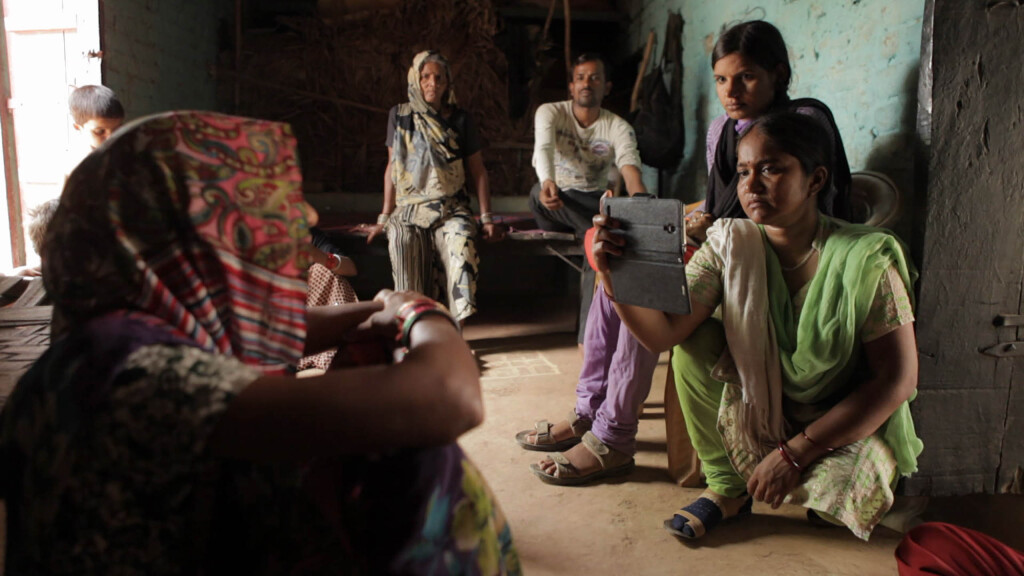
Writing With Fire was filmed over a five-year period beginning in 2016 during a pivotal moment in Khabar Lahariya’s history. What makes Khabar Lahariya particularly unique, beyond their journalistic excellence, is that its entirely run by women, and not just female, but women from Dalit, tribal, Muslim and backward castes.
In India, caste discrimination is rampant. There are four main castes (each with their various sub-castes), but Dalits, which means oppressed, do not even register amongst the four caste structural hierarchy, they’re pejoratively known as “untouchables.”
The documentary dives deep into the personal world and professional space of three Khabar Lahariya journalists (all Dalits), current Bureau Chief Reporter Meera Devi, Reporter Shyamkali Devi and Suneeta.
From their home in New Delhi, Rintu and Sushmit elaborate on their journey of bringing this passion project to life and condensing this sprawling narrative to a perfectly tight and globally accessible 92 minutes.
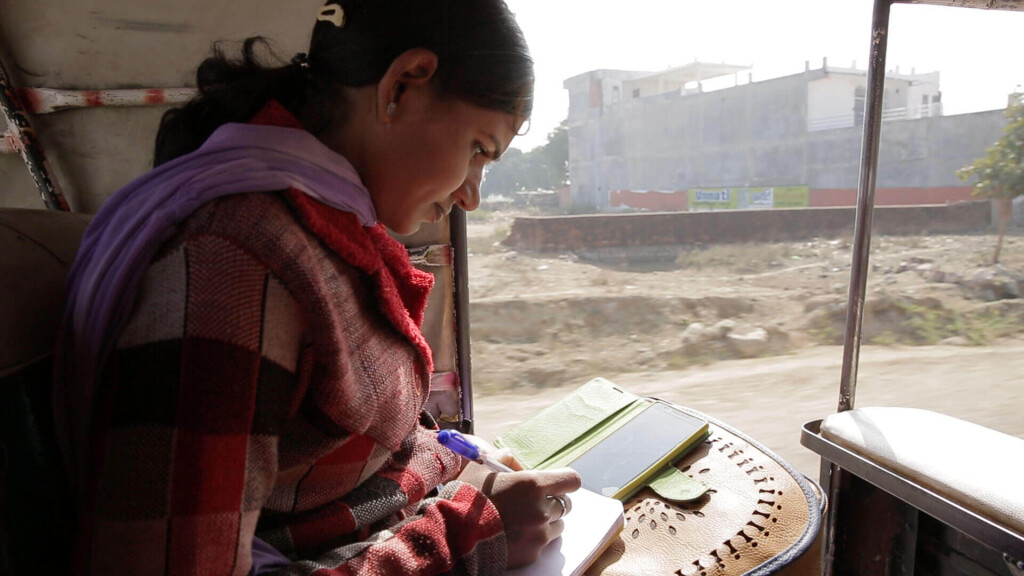
The first scene in the documentary, we’re introduced to the hostile environment these courageous journalists encounter on a regular basis — Meera is questioning the local police commander on why a rape case is not being actively investigated. In India a rape is reported every 15 minutes, but the outcome of justice is completely different.
“The women journalists at Khabar Lahariya are master negotiators and are able to walk their way in and out of all kinds of situations, ranging from trouble to downright danger,” Rintu says. “They’re astute in their ability to read the ground very quickly and I feel that this instinct also comes from being a Dalit woman, you are expressing your agency in spaces that are designed to keep you out.”
Sushmit adds to this, “For us, the greatest impact is in the way Khabar Lahariya has dismantled the notion of what a Dalit woman can aspire, achieve and articulate. Working in a region where being a journalist has traditionally been the bastion of men, to have professional women journalists holding truth to power through a smartphone has revolutionized the way women are perceived and respected.”
Khabar Lahariya, which translates to “News Wave” in Hindi, was started as a nonprofit newspaper in 2002, located in the northern state of Uttar Pradesh. Over the course of nearly two decades it increased its hyper-local journalism to 13 districts in the state with further expansion into its bordering southern state, Madhya Pradesh. It now operates as for-profit under Chambal Media with a staff of approximately 40 women plus freelancers.
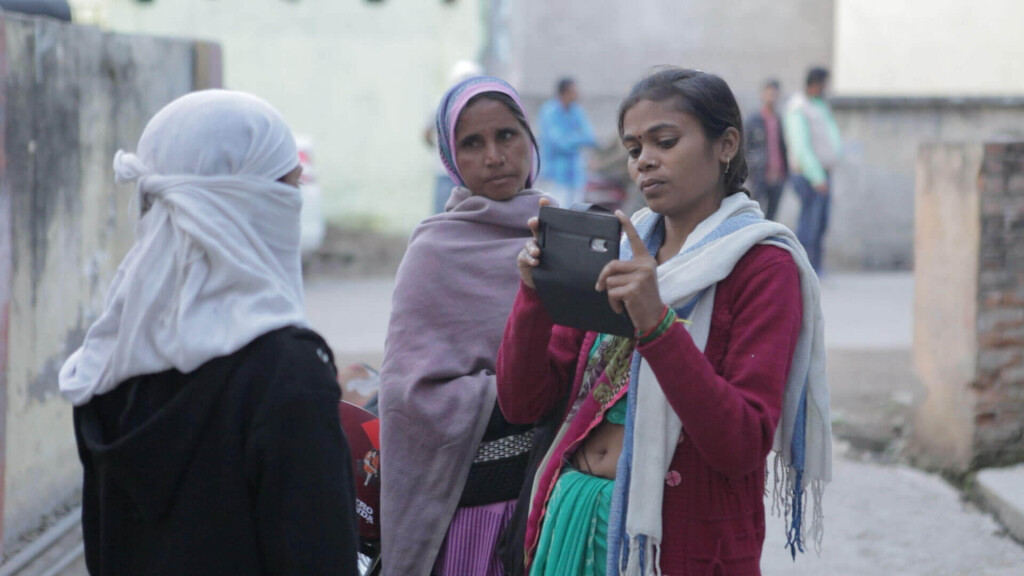
It was a digital algorithmic wonder on how Rintu and Sushmit discovered Khabar Lahariya’s existence — scrolling on the internet in 2015 they came across a photo essay of Khabar Lahariya journalists dressed in beautiful saris distributing the newspaper, literally in the middle of nowhere.
Immediately they were hooked and had to find out more. Their day job is Black Ticket Films, which is a digital agency producing multimedia content and marketing services that both Rintu and Sushmit founded in 2009. Its ethos has always been working with clients on projects for social impact. They had a series of award-winning shorts, but their mutual desire was always to create a feature-length narrative.
“While there were a lot of ideas, we were waiting for a story that was impossible to walk away from. We’re both also naturally drawn to stories of outliers, people who have created deep impact within their communities and given us a model for living life that is not only inspiring but replicable,” Rintu says.
Having the steady workflow from Black Ticket Films was instrumental though in order to pursue the documentary from the beginning, Sushmit adds, “we knew that we’d have to finance a lot of the early stages of development and production of Writing With Fire through the company. Financing a feature that spans across years meant we were on a see-saw of self-belief and abject self-doubt at many moments.”
After securing access with Khabar Lahariya, the first day of shooting was when all the journalists were in a room discussing and debating on becoming a digital-first news platform through smartphone video recording that they would distribute on YouTube and social media. As seen in the documentary, some were excited and others apprehensive.
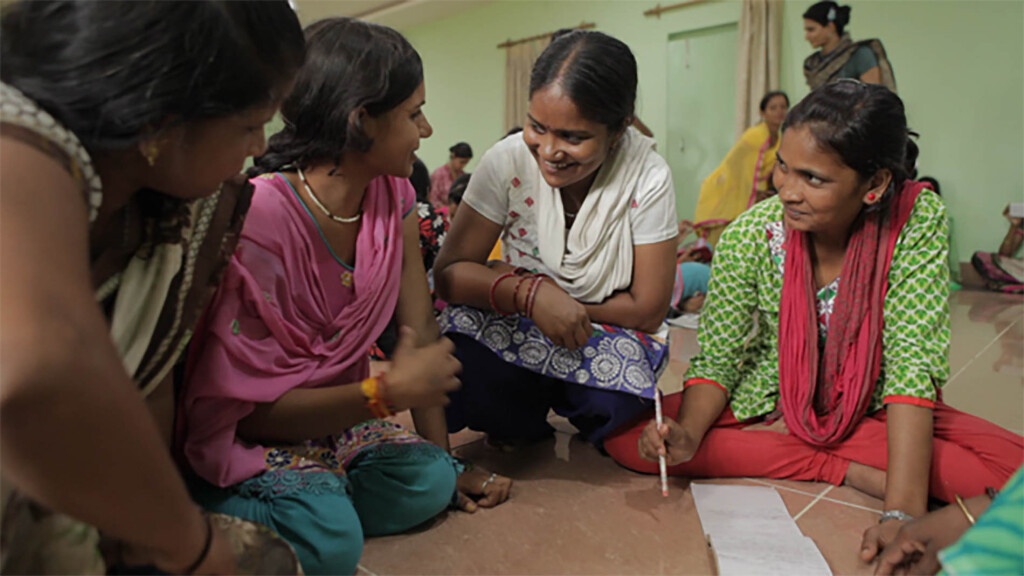
“We knew we had walked into a beautiful cusp in time,” says Sushmit. “The success or failure of the newspaper with this risky shift was immaterial to us. What we were more interested in, was understanding how these women understood the world and made their place in it. They were creating their own agency in challenging age-old systems of power with the dynamic force of digital technology; impact was inevitable.”
Over the course of the documentary we see the journalists evolve, adapt, embrace and really succeed with the digital reporting medium. We witness Khabar Lahariya news packages posted on YouTube go from minimal views to ending on 151 million. At the time of this writing, they’re at 164.5 million views.
Combining the local government’s continued internet infrastructure connection to rural communities and the rapid engaged success from digital content, Khabar Lahariya soon ceased printing its newspaper and became a digital news platform.
“We knew very early on that the newspaper’s journey would form the meta-narrative; almost a Trojan horse that leads you to believe that this is the story of a newspaper in flux,” says Sushmit. “What we were aiming at, was to deep-dive into the personal worlds of each of the three women journalists we’d chosen to follow and explore their own inner worlds. For us, Meera, Suneeta and Shyamkali are metaphors for what the modern Indian woman is, each with her distinct personality and personal history.”
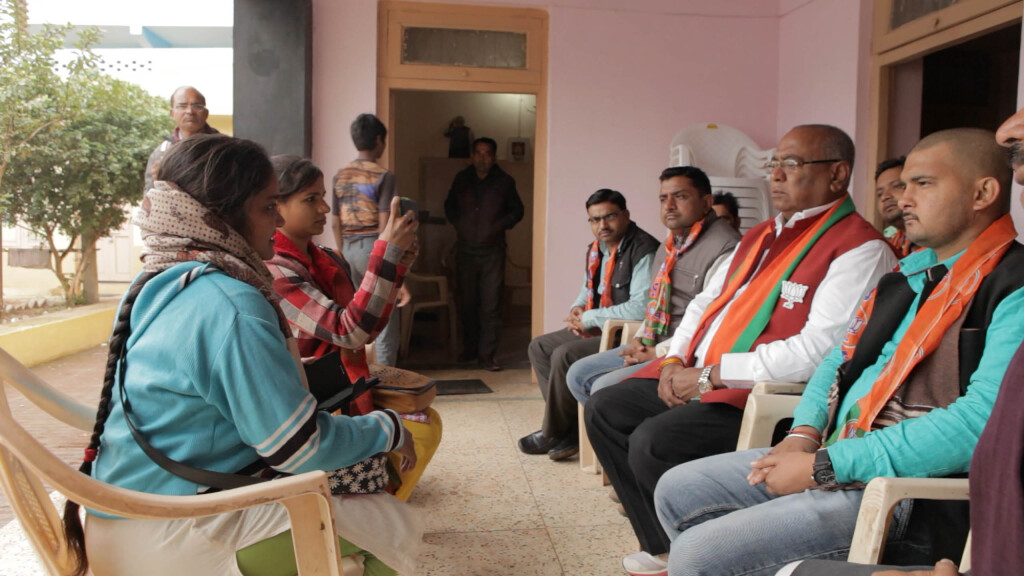
To see these three modern Indian women be so honest and courageous stems from the trust Rintu and Sushmit had established from the years of commitment and dedication to the truth.
“Our creative approach to filming documentaries has always been one of respectful distance,” says Rintu. “To be allowed into the personal worlds of our protagonists is always a privilege and we are mindful of not actively intervening with their realities so that we’re able to capture an authentic experience of their world.
“The biggest challenge was in filming with our characters, who were mostly working in extremely hostile spaces — reporting from illegal mines run by powerful mafia, in police stations where rolling a camera is almost impossible, in meetings with politicians who are reluctant to be questioned by women with a camera. And also in spaces of deep grief — homes of rape survivors, families of murder victims and survivors of domestic violence.”
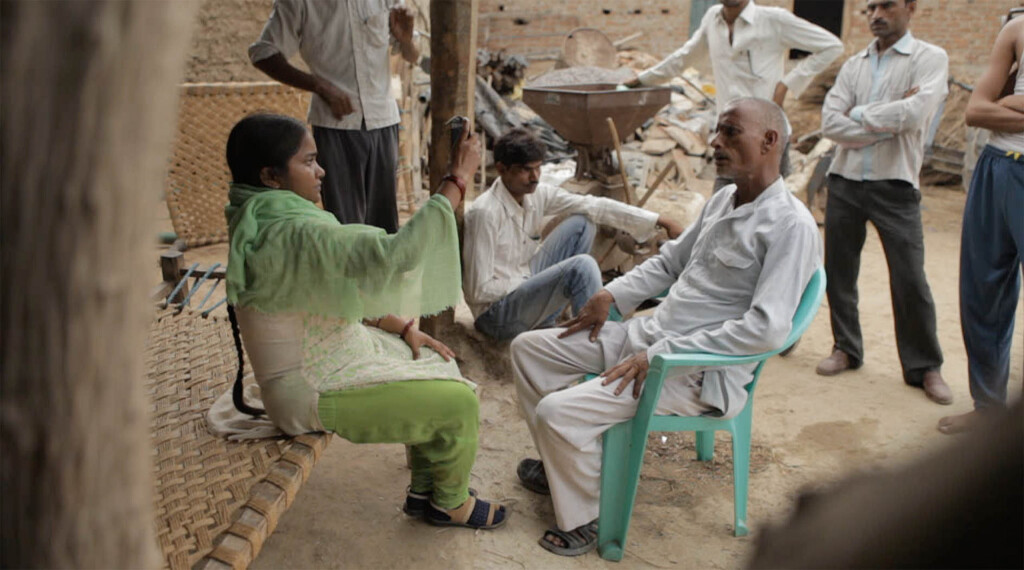
In order to accomplish their objective of capturing authenticity in tight fly-on-the-wall scenarios, much of the documentary was shot on Canon 5D cameras and they operated as a three-person team: Rintu, Sushmit and their cinematographer (and regular collaborator) Karan Thapliyal.
The skeleton crew also made the sound recording responsibilities fall on Rintu, a skillset for her that was very much a learning as she went along. This new skillset was a playful mirror to the journalists who were also learning as they went along with filmmaking.
“Seeing their journey adapting to digital technologies, left me with no excuse but to adapt to the rigors of multi-tasking on the ground and picking up the tropes of sound-recording,” Rintu says. However, “as a part of our filming process, we knew we didn’t want to interfere with any part of their own journey with understanding and using new technology. So while the temptation to step in and support them was huge, we decided to not contaminate ‘their reality’ with our own intervention.”
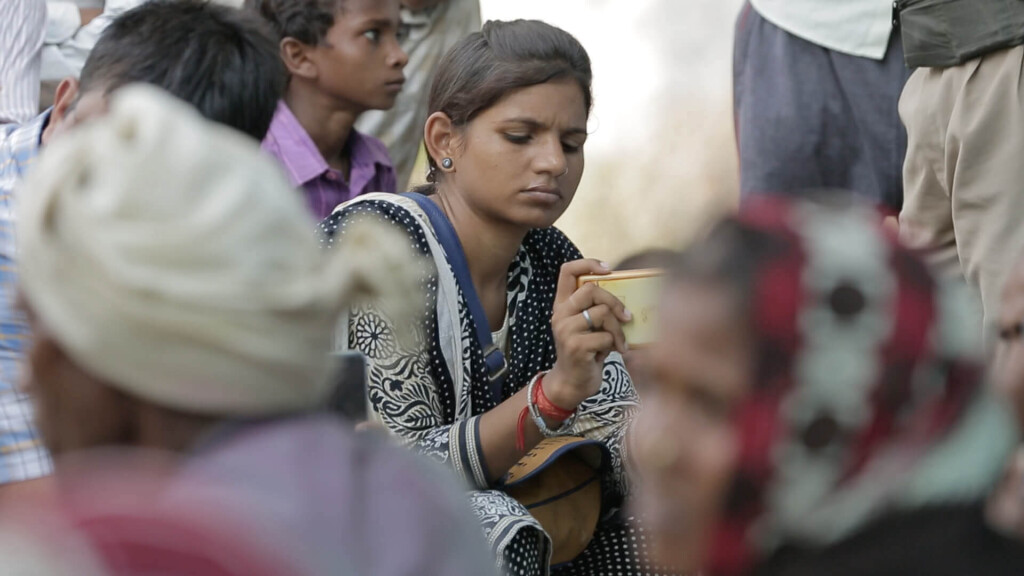
Knowing this was going to be many years in the making, Rintu and Sushmit ensured that after every shooting day that created an assembly edit of what was shot, so by the end of the five year period, it would not be as relentless piecing together the narrative.
“I decided to take a back-seat from the company in 2019 to begin work on assembling a rough-cut on the edit while Rintu took the lead with our client commissions,” Sushmit says. “This is a model we’ve always followed with our independent work where we invest our time in a passion project but also continue with other work so that we’re creatively shifting between projects, and these jumps allow us to come back into our indie work with renewed vigor and fresh ideas.”
Of course the ability to accomplish this tremendous balancing act is a relationship between the two that goes back 15 years when Rintu and Sushmit new each other at film school, working as professionals and evolving that into their own company.
“Each of these relationships has had a bearing on how we’ve evolved emotionally and creatively. Resolving disagreements on a set, in an edit room and at home demand their own creativity,” Rintu says.
“Sushmit is a big-picture person, always looking at the long time horizon whether that be in life or through his lens as a director-cinematographer. I am more granular, I love focusing on the finer details and I suppose that’s how we complement each other.”
The team nature of Rintu and Sushmit is also certainly mirrored by the Khabar Lahariya journalists. Powerfully concluding the documentary that is reflective of our contemporary times, is quote from Meera, “when future generations ask us, ‘what were you doing when the media was silenced?’ I can say Khabar Lahariya was fighting.”
Related Reading




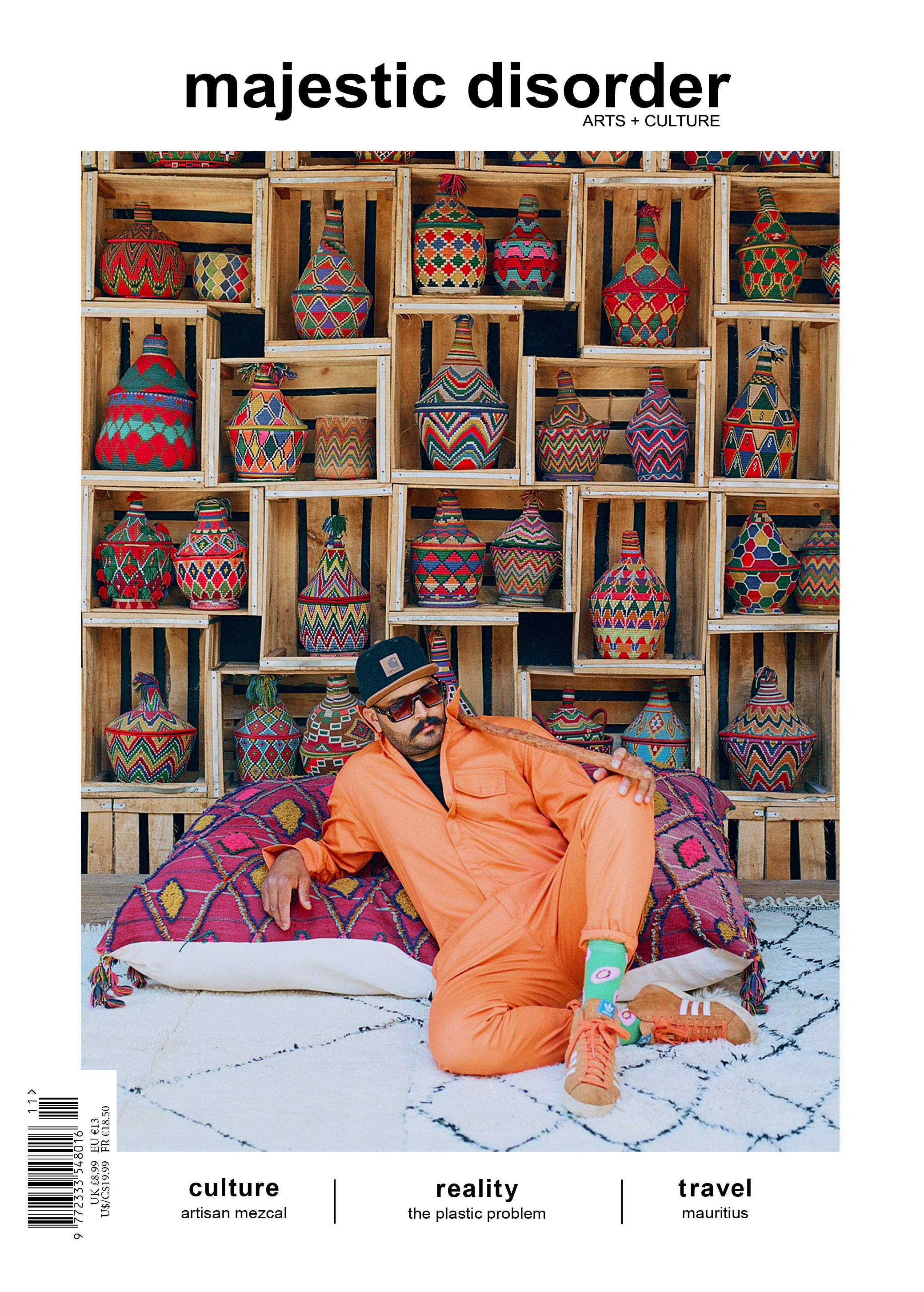
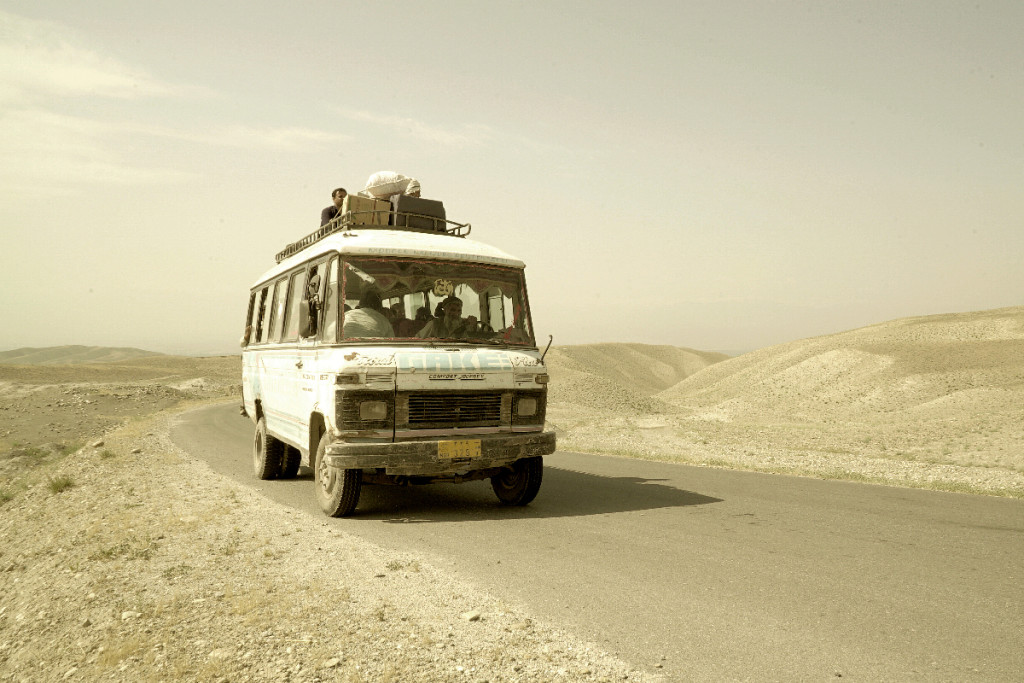
 @majesticdisorder
@majesticdisorder